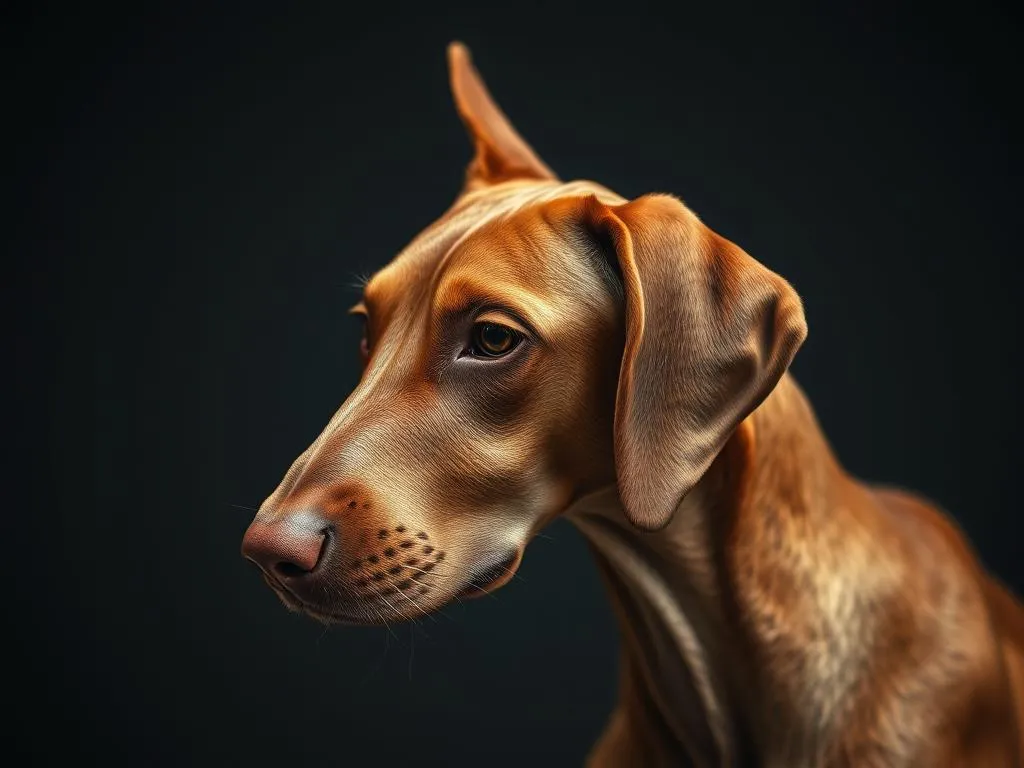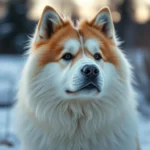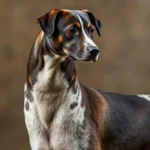
Introduction
When it comes to choosing a dog, the variety of dog breeds available can be overwhelming. Each breed has its unique characteristics, temperament, and care requirements, making the decision crucial for potential pet owners. Selecting the right breed is vital as it can significantly affect one’s lifestyle, compatibility, and the overall relationship between the dog and its owner.
One breed that stands out for its loyalty, energy, and affectionate nature is the Vizsla. Known for its striking appearance and vibrant personality, the Vizsla is a remarkable choice for those looking for a devoted companion.
History of the Vizsla
The roots of the Vizsla can be traced back to Hungary, where it was originally bred for hunting and companionship. Known as the “Hungarian Pointer,” the breed has a rich history that intertwines with the lives of Hungarian nobility.
Origins of the Breed
The Vizsla was primarily bred to assist hunters in retrieving game, showcasing its exceptional tracking and pointing abilities. This breed has long been favored for its keen sense of smell and strong instincts, making it an invaluable ally in the field.
Development Through the Centuries
Over the centuries, the Vizsla has undergone various developments. The breed faced decline during World War II, but dedicated enthusiasts worked to revive its numbers. Recognition in dog shows and competitions during the 20th century helped to solidify the breed’s status, with the Vizsla becoming a beloved companion and show dog.
Cultural Significance
In Hungary, the Vizsla holds a special place in cultural traditions, often depicted in art and literature. Its representation in modern society continues to reflect the breed’s noble heritage and loyalty, endearing it to families and individuals alike.
Physical Characteristics
The Vizsla is a medium-sized breed known for its elegant build and athleticism. Understanding its physical characteristics can help potential owners appreciate what makes this breed unique.
Size and Weight
On average, Vizslas stand about 21 to 24 inches tall at the shoulder and typically weigh between 45 to 65 pounds. Their well-muscled bodies give them strength and agility, which is essential for their historical role as hunting dogs.
Coat and Color
The coat of a Vizsla is one of its most distinctive features. It is short, smooth, and dense, requiring minimal grooming. The primary coat color is a rich golden rust, which can vary in shade but maintains a consistent appearance across the breed.
Distinctive Features
Vizslas have unique physical traits that set them apart. Their expressive eyes, long ears, and sleek bodies contribute to an overall look of grace and elegance. Their high energy levels and playful demeanor are often reflected in their movements, making them a joy to observe.
Temperament and Behavior
The temperament of the Vizsla is one of its most appealing aspects. Known for their affectionate nature, these dogs thrive on human companionship and are eager to please.
General Personality Traits
Vizslas are typically affectionate, energetic, and intelligent. They form strong bonds with their families and often seek attention and interaction. Their friendly disposition makes them excellent companions for both active individuals and families.
Social Behavior
In terms of social behavior, Vizslas are known to be good with children and can coexist peacefully with other pets when properly socialized. Their friendly approach often makes them a favorite among visitors, as they are generally welcoming and playful.
Training and Responsiveness
Training a Vizsla can be a rewarding experience due to their intelligence and eagerness to learn. However, they can also exhibit stubbornness, requiring consistent and positive reinforcement during training sessions. Engaging in activities like agility or obedience training can help channel their energy effectively.
Health and Care
Caring for a Vizsla involves understanding potential health issues and routine care needs to ensure a happy, healthy life.
Common Health Issues
Like all breeds, Vizslas are prone to certain health concerns. Common issues include hip dysplasia, skin allergies, and certain types of cancer. Regular veterinary check-ups and a healthy lifestyle can mitigate some of these risks.
Life Expectancy
The average lifespan of a Vizsla ranges from 10 to 14 years. Factors such as genetics, diet, exercise, and overall care can influence longevity.
Routine Care Needs
Routine care for a Vizsla includes regular grooming, exercise, and a balanced diet. Their short coat requires minimal grooming, but they benefit from regular baths to maintain skin health. Daily exercise is crucial, given their high energy levels; activities should include walks, runs, and playtime.
Living with a Vizsla
Understanding how to provide an ideal living environment for a Vizsla can significantly enhance the owner-dog relationship.
Ideal Living Conditions
Vizslas thrive in environments where they can be active. They typically do well in homes with yards but can adapt to apartment living if they receive ample exercise. They are sensitive to extreme temperatures, so a climate-controlled environment is ideal.
Exercise and Activity Level
Daily exercise is essential for a Vizsla to maintain physical and mental health. They require at least 1 to 2 hours of vigorous activity each day, which can include running, playing fetch, or participating in dog sports. Boredom can lead to destructive behavior, so keeping them engaged is key.
Family Compatibility
Vizslas are known for their affectionate nature, making them suitable for families, singles, and active individuals. They bond closely with their families and often thrive in environments where they can be included in daily activities.
Pros and Cons of Owning a Vizsla
Like any breed, owning a Vizsla comes with its advantages and challenges.
Advantages of the Breed
- Companionship: Vizslas are incredibly loyal and affectionate, making them wonderful companions.
- Energy: Their high energy levels are perfect for active owners who enjoy outdoor activities.
- Intelligence: Their intelligence makes them trainable and eager to participate in various activities.
Challenges of Ownership
- High Exercise Needs: Vizslas require significant exercise, which may be challenging for less active owners.
- Separation Anxiety: Due to their strong attachment to their families, they may experience separation anxiety if left alone for long periods.
- Stubbornness: While trainable, they can exhibit stubborn behavior, requiring patience and consistency in training.
Conclusion
The Vizsla is a remarkable breed that combines beauty, intelligence, and an affectionate nature. Their unique traits make them suitable for various lifestyles, particularly for those who can provide the exercise and companionship they crave.
Considering a Vizsla as a pet means embracing a loyal companion that will fill your life with love and energy. Prospective owners should weigh their lifestyle against the care needs of the breed to ensure a fulfilling relationship.
FAQs about Vizslas
What is the ideal living situation for a Vizsla?
Vizslas do best in homes that allow for plenty of exercise and interaction. A house with a yard is ideal, but they can adapt to apartment living with sufficient daily exercise.
How much exercise does a Vizsla need?
A Vizsla typically requires at least 1 to 2 hours of vigorous exercise each day to stay healthy and happy.
Are Vizslas good with children?
Yes, Vizslas are known for their friendly and affectionate nature and often get along well with children.
What are common health issues in Vizslas?
Common health concerns for Vizslas include hip dysplasia, skin allergies, and certain types of cancer. Regular vet check-ups can help manage these risks.
How trainable are Vizslas?
Vizslas are intelligent and generally eager to please, making them trainable. However, they can show stubbornness, so consistent and positive reinforcement is essential.
By understanding the history, characteristics, and needs of the Vizsla, potential owners can make informed decisions and enjoy the many rewards of having this breed as a companion.









